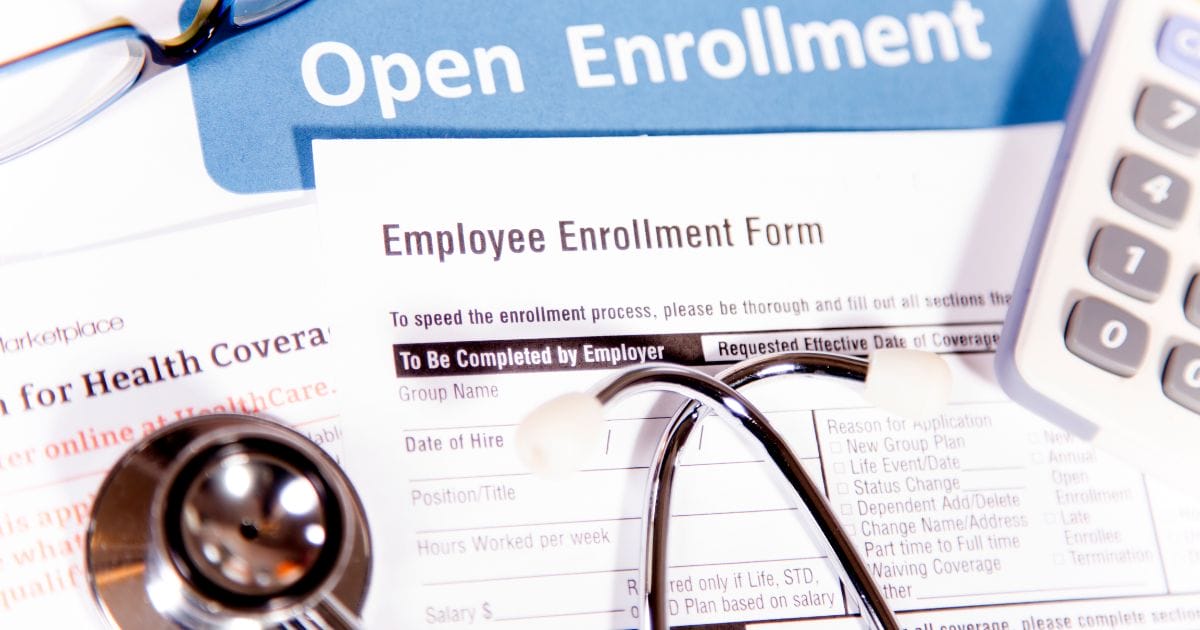Open enrollment is right around the corner. This is the time to review benefit options and make adjustments for the year to come. Whether one accepts the benefits or not, open enrollment is a mandatory process at most companies and can be nerve-wracking at times.
Fortunately, I developed a quick guide to help make the best choices for you and your family in the areas of health insurance, life insurance, disability insurance and retirement savings.
- Health insurance
Health insurance is the meat of open enrollment. Unless one goes through a qualifying, life changing event like childbirth or marriage, it will be the only time to sign up for, or change your health insurance plan until open enrollment the following year.
Even if you like your current plan and your employer is keeping it, re-enrollment is still required. It also represents a great opportunity to ensure the selected plan is still the best choice.
It helps to have a realistic picture of the frequency of doctor visits. Try recalling the number of appointments, how much was spent and the anticipated number of visits for the upcoming year.
Other things to consider include: Did you meet your deductible this past year? Did you come close? Do you have any specialist appointments coming up? Obviously, one can’t plan for every medical appointment, but it helps to plan for the expenses that are a given.
For many, it makes sense to choose the network type first. This is largely a question of personal preference. Things to consider include: Is your doctor covered by the plan? Are there in-network doctors available near you? Is it important to you to be able to go to any doctor?
To get an idea of annual costs for each plan do the following:
– Add all premium payments for a rough estimate of what you would pay in a totally healthy year
– Add all premium payments plus the deductible for a rough estimate of what you’d pay in a higher-cost year.
Consider how often you go to the doctor. If the number of visits is relatively high, then a higher premium/lower deductible plan may make sense.
Lastly, if you take name-brand prescriptions, make sure your plan covers them.
- Vision & dental insurance
Many employers offer options for dental and vision insurance. It’s a good idea to accept any free coverage offered by your employer. Think through how these services were used in the past year (if at all), how likely they will be used in the future to decide whether to opt-in to pay for additional coverage.
- FSAs & HSAs
Health savings accounts and flexible spending accounts allow the storage of pre-tax income to spend later on health-related expenses.
A health savings account is only available when one has a high-deductible health insurance plan. (For 2020, the IRS defines a high deductible health plan as any plan with a deductible of at least $1,400 for an individual or $2,800 for a family. Remember that the deductible is how much you have to pay out of pocket before your insurance will cover anything.)
The 2020 HSA contribution limit is $3,650 for an individual and $7,300 for a family. The catch-up contribution amount for individuals age 55 or older will remain $1,000. There are no deadlines to use these funds and they carry over year to year.
If your employer offers a flexible savings account, then you are eligible regardless of which health plan you choose. An FSA is another good way to save pre-tax money for health-related costs, but your savings generally must be used during the calendar year.
Some employers may offer a $500 rollover limit or extend the reimbursement claim deadline two months into the next year, but other than that, the account is “use it or lose it.” The 2022 FSA contribution limit is expected to be $2,850 for an individual.
If you have children who are under age 13 for at least part of the year, then check to see if your employer offers a dependent care FSA. These accounts allow you to use pre-tax dollars for some childcare costs, but make sure you understand the rules. Not every type of expense is covered, and funds cannot be moved between your FSA and the dependent care FSA.
- Life insurance
Be sure to accept any free life insurance coverage offered by your employer. It’s important to understand that accepting that coverage doesn’t mean that “life insurance” should be crossed off your list. Thankfully, open enrollment is the perfect time to reassess your coverage needs.
Most people need 10 to 12 times their annual salary in life insurance coverage, but most employers only offer one to two times the annual salary (and some offer even less), meaning that your life insurance coverage through your employer may not be enough.
While many employers offer the possibility to purchase additional coverage during open enrollment, it’s generally better to purchase your own personal life insurance. Here’s why: better rates may be identified by shopping on your own, and your personal policy won’t be tied to your employment.
If you purchase life insurance through your job and then leave, there may be an option to convert your work coverage to a private plan, but it will be much more expensive than simply purchasing a personal plan in the first place.
In addition, it is best to purchase life insurance early (rather than waiting until you leave your job, for example) because life insurance prices go up 8 percent to 10 percent every year you age. You can lock in a better rate if you get additional coverage during open enrollment than if you put it off.
- Disability insurance
Disability insurance is another type of coverage that should be opted into if your employer offers it at no cost. Most employers, however, only offer short-term disability insurance. Open enrollment is a great time to evaluate whether additional coverage is needed like long-term disability insurance.
Group disability insurance is often capped at a low benefit amount and has more coverage restrictions than an individual policy. It’s a good idea to have a supplemental individual policy to fill in the gaps and have throughout your career.
- Retirement savings
During open enrollment, your employer will likely ask employees to revisit retirement contributions. If your employer offers a match, definitely contribute up to the match, and don’t leave that money on the table.
If they don’t match, or if you’re wondering if you should be saving more, remember that the more you can save through a 401(k) or individual retirement account, the more you’ll save on taxes. Try to contribute the maximum amount allowed, or as close to that as you can afford.
Happy enrollment season!

Connect with Delta Jones-Walker and Atled Financial on Facebook, Twitter: @Atled_Financial and LinkedIn! To schedule a free consultation or a presentation to your group or organization, call 219-513-3710 or email [email protected] and mention this column. Topic ideas for this column are welcome
Securities and investment advisory services offered through Woodbury Financial Services, Inc. (WFS) member FINRA/SIPC. WFS is separately owned and other entities and/or marketing names, products or services referenced here are independent of WFS. Insurance services offered through Atled Financial Group 3801 Ridge Road. Highland, IN 46322






